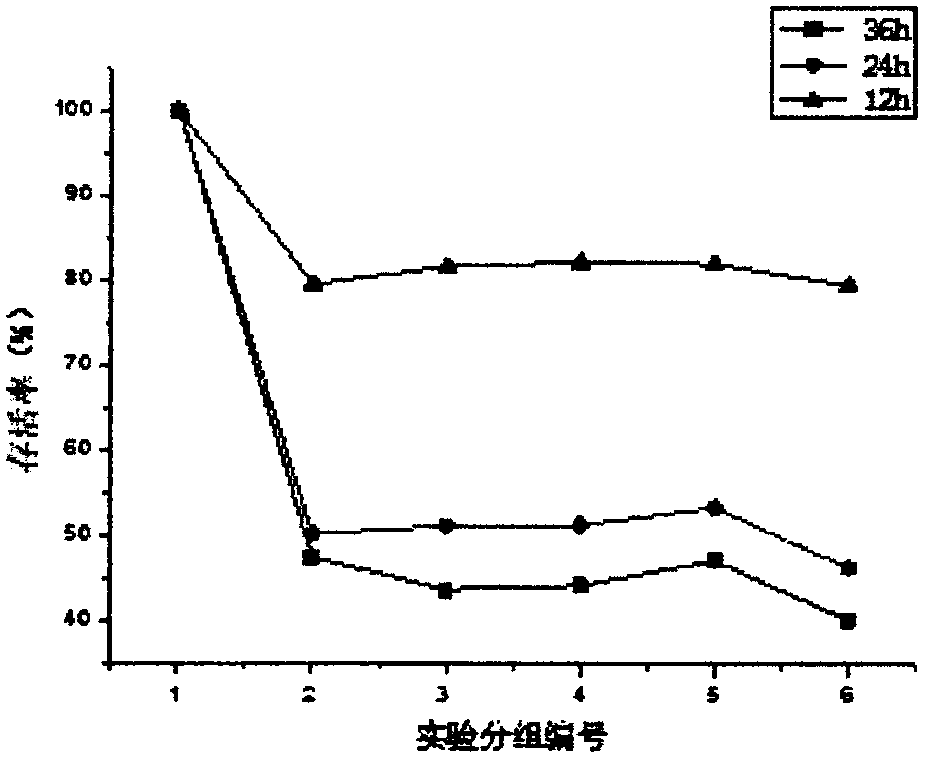Application of polypeptide and polypeptide composition in treatment of colon cancer
A polypeptide composition and colon cancer technology, applied in the field of biomedicine, can solve the problems that APC cannot be effectively combined with β-catenin, and achieve the effect of inhibiting the growth of nude mouse tumor models, inhibiting the activity of tumor cells, and having a good prospect for drug use
- Summary
- Abstract
- Description
- Claims
- Application Information
AI Technical Summary
Problems solved by technology
Method used
Image
Examples
Embodiment 1
[0021] [Example 1] Configuration of polypeptide working solution
[0022] 1. Preparation of stock solution: 1 mg / bottle of peptide, centrifuged at 4°C, 12000 rpm, for 5 min; add PBS and 5 μl DMSO to make stock solution with a final concentration of 0.5 mM, as shown in the table below.
[0023]
[0024] 2. Preparation of working solution: Dilute the stock solution with PBS to prepare a working solution with a concentration of 5 μM.
Embodiment 2
[0025] [Example 2] The CCK-8 experiment proves the anti-colon cancer effect of the polypeptide at the cellular level
[0026] The present invention exerts its anti-tumor effect in the form of a synthetic peptide. The CCK-8 experiment proves that the polypeptide has a growth inhibitory effect on human colon cancer cells. A human colon cancer cell HT-29 is taken as an example.
[0027] 1. Cell model grouping:
[0028] (1) Normal control group: normal cells
[0029] (2) Experimental control group: cells treated with control polypeptide (SEQ ID NO.4) (100 μl of working solution for each well of 96-well plate)
[0030] (3) Experimental group 1: Cells treated with SEQ ID NO.1 polypeptide (100 μl of working solution for each well of 96-well plate)
[0031] (4) Experimental group 2: Cells treated with the polypeptide of SEQ ID NO.2 (100 μl of working solution for each well of a 96-well plate)
[0032] (5) Experimental group 3: Cells treated with the polypeptide of SEQ ID NO.3 (100 ...
Embodiment 3
[0045] [Example 3] Cell cloning experiment proves the anti-colon cancer effect of the polypeptide at the cellular level
[0046] 1. Cell culture and cell grouping are the same as in Example 2
[0047] 2. Cell cloning experiment steps:
[0048] 3. Experimental steps
[0049] (1) The treated cells of each group were digested with 0.25% trypsin and blown into single cells, and the cells were suspended in McCOY's 5A medium with 10% fetal bovine serum for use.
[0050] (2) Dilute the cell suspension by gradient multiples, and inoculate 1000 cells per dish of each group into 10 mL 37°C pre-warmed culture plates, and rotate gently to make the cells evenly dispersed. Place them in a cell culture incubator at 37°C, 5% CO2 and saturated humidity for 10-14 days.
[0051] (3) When colonies visible to the naked eye appear in the culture dish, the culture is terminated. Discard the supernatant and carefully soak twice with PBS. Crystal violet was stained for 10 min, then the staining s...
PUM
 Login to View More
Login to View More Abstract
Description
Claims
Application Information
 Login to View More
Login to View More - R&D
- Intellectual Property
- Life Sciences
- Materials
- Tech Scout
- Unparalleled Data Quality
- Higher Quality Content
- 60% Fewer Hallucinations
Browse by: Latest US Patents, China's latest patents, Technical Efficacy Thesaurus, Application Domain, Technology Topic, Popular Technical Reports.
© 2025 PatSnap. All rights reserved.Legal|Privacy policy|Modern Slavery Act Transparency Statement|Sitemap|About US| Contact US: help@patsnap.com



